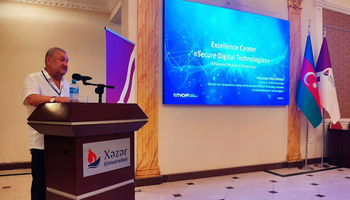First launch from the Vostochny Cosmodrome will use equipment designed by TUSUR University
The Research Institute of Automatics and Electromechanics of TUSUR University has designed unique testing equipment for the new Russian satellite Aist-2D.
Director of the Institute Viktor Rulevsky says that the equipment system that supports the full testing cycle, functional control and alignment of equipment, and pre-launch preparation of the satellite. The equipment was manufactured in Tomsk and in 2015 delivered to the customer – the Samara State Aerospace University and Aerospace Center Progress, the designers of the new satellite. The equipment has been installed at the Vostochny Cosmodrome and will be used for pre-launch satellite processing.
“The main goal of the testing is to check the power system of the spacecraft that ensures its proper performance during launch, ascent and in-orbit operation,” says Viktor Rulevsky. “The equipment is a unique development for Russia that includes solar battery imitators, battery imitators and load simulators. It will be used during the design process and assembly for calibration and testing of normal and emergency modes of the spacecraft.”
The Aist-2D satellite will be put into orbit with satellite launcher Soyuz 2.1a in April 2016, and will be the first launch from the new Vostochny Cosmodrome. Aist-2D is an electrooptical Earth observation satellite that offers Earth surface survey at a 1.5 meter resolution.
The Research Institute of Automatics and Electromechanics of TUSUR University is the only Russian designer and manufacturer of pre-launch testing equipment for spacecraft power systems. Testing equipment designed and manufactured by the Institute is installed at the famous Plesetsk and Baikonur Cosmodromes, and now at the new Vostochny Cosmodrome. In 1998 the Institute of Automatics and Electromechanics created Russia’s first automated system for ground testing of spacecraft, certified by EADS.




.png)

